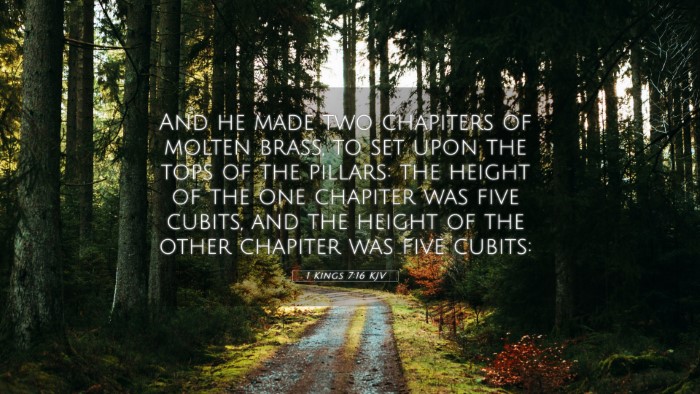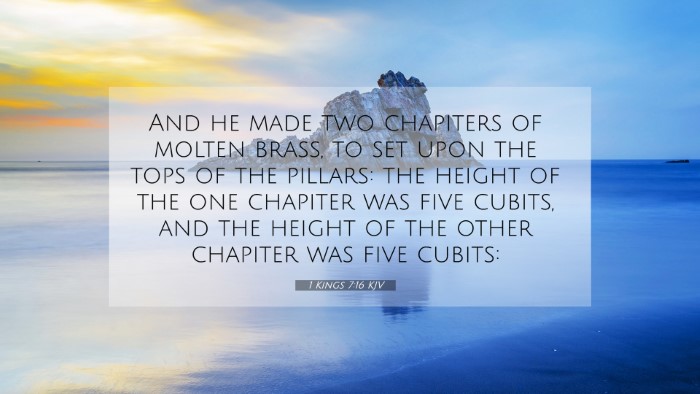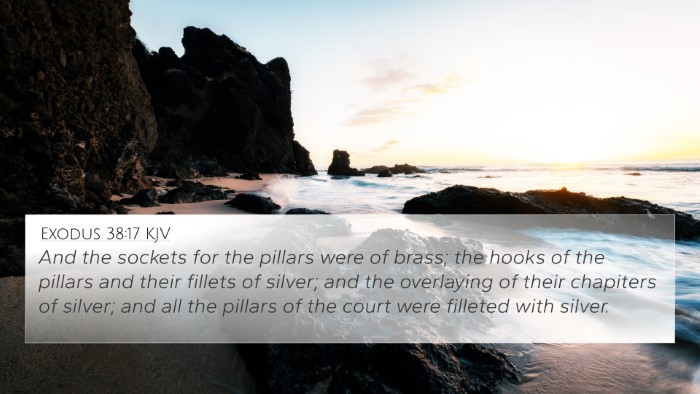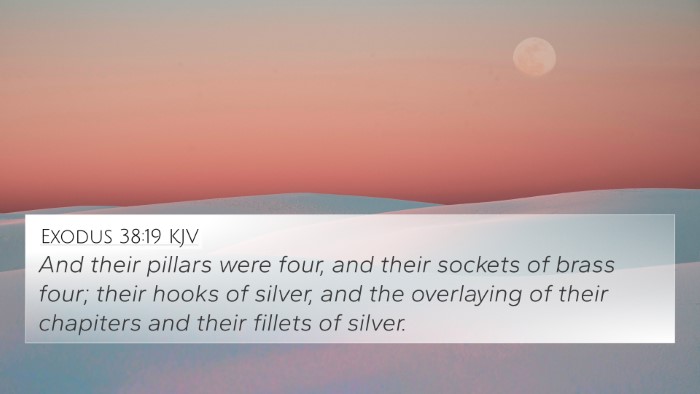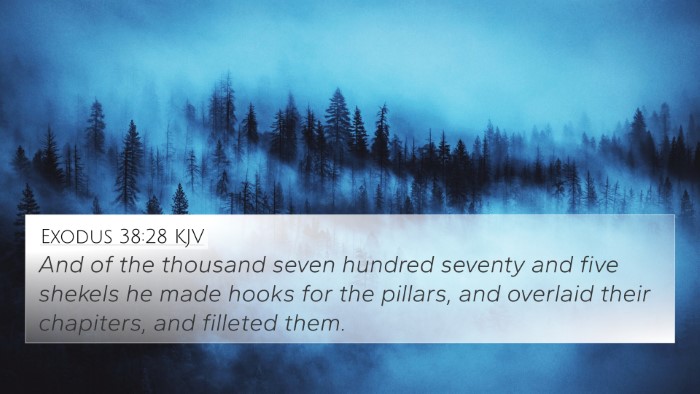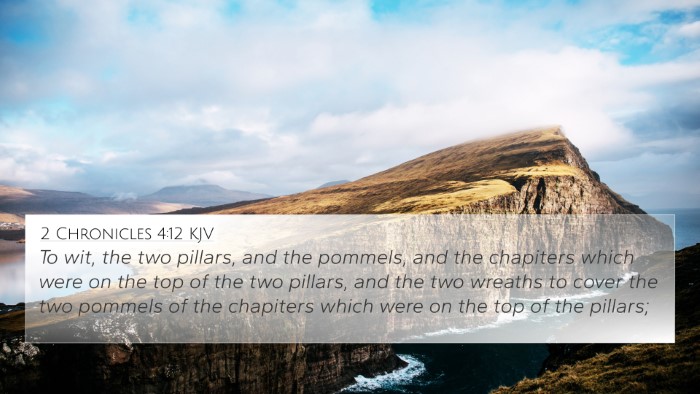Understanding 1 Kings 7:16
1 Kings 7:16 states: "And he made two pillars of brass, eighteen cubits high apiece; and a line of twelve cubits did compass either of them about." This verse details the construction of two significant bronze pillars, which served as notable features in Solomon's Temple. Below is a comprehensive analysis of the verse through various commentaries.
Commentary Insights
Matthew Henry's Commentary
Matthew Henry emphasizes the symbolic nature of the pillars, noting that they represent strength and stability in God's house. The height and dimensions indicate God's grandeur and the importance of the Temple as a place of worship. The two pillars, named Jachin and Boaz, signify God's support and the establishment of His covenant with His people.
Albert Barnes' Commentary
Albert Barnes highlights the architectural significance of the pillars, explaining that their impressive stature served both aesthetic and functional purposes within the Temple. They stood as a testament to Solomon's wisdom in design and the glory of God, inviting worshippers to behold the majesty of the Lord through the beauty of His house.
Adam Clarke's Commentary
Adam Clarke notes that the construction of the pillars was a monumental task, reflecting the greatness of the Temple construction effort. He points out that the height of eighteen cubits (approximately 27 feet) made them striking landmarks, symbolizing God's everlasting presence among His people. The twelve cubits in circumference emphasize their solidity and importance in the architectural design of the Temple.
Significant Themes and Connections
This verse has significant theological implications as well as connections to other Bible verses and themes. Here are some key points:
- Pillars as Symbols: In the Bible, pillars often symbolize strength and support (Psalm 75:3).
- Divine Presence: The pillars signify God’s presence, paralleling Exodus 26:32-33, where the tabernacle exhibits divine dwelling.
- Architectural Grandeur: The design creates a link to the grandeur described in 2 Chronicles 3:15-17, where similar features are mentioned during construction.
- Establishment of Worship: These pillars serve as reminders of God's promise to His people, connecting with Isaiah 54:11-12 regarding the restoration of Israel.
- Historical Context: The construction of the Temple marked a significant period in Israel's history, corresponding to Jeremiah 7:4, emphasizing the importance of the Temple.
- Significance of Numbers: The numbers in this verse have theological meaning, such as 12 representing God's people (Revelation 21:12-14).
- Theological Implications: The verses explore God's faithfulness, linking to 1 Corinthians 3:16-17, which describes believers as God's temple.
Cross-References for Further Study
This passage can be cross-referenced to deepen understanding and draw connections between different scriptures:
- Exodus 26:32-33
- 2 Chronicles 3:15-17
- Jeremiah 7:4
- Psalms 75:3
- Isaiah 54:11-12
- 1 Corinthians 3:16-17
- Revelation 21:12-14
- 1 Kings 6:2
- 1 Kings 8:8
- 2 Chronicles 4:12-13
Practical Application of Cross-Referencing
Engaging in cross-referencing helps readers to:
- Deepen Their Understanding: Exploring connections between verses illuminates the overarching narrative of the Bible.
- Enhance Bible Studies: Utilizing these references provides a richer context for study sessions and sermons.
- Discover Thematic Links: Identifying themes across both Old and New Testaments reinforces Biblical teachings.
- Guide Personal Reflection: Relating various scriptures enhances personal spirituality and application in modern life.
- Support Interpretation: Gathering context aids in the understanding of difficult passages through broader themes.
Conclusion
In conclusion, 1 Kings 7:16 not only highlights an architectural achievement but also offers rich theological insights and connections to various passages throughout the Bible. Engaging with such verses through cross-referencing enables a more profound understanding of God's word and His intentions for humanity. Utilizing resources like Bible concordances and cross-reference guides can significantly benefit personal study and communal worship.

